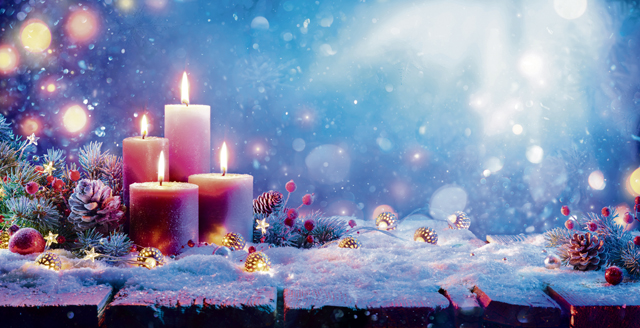
Advent, advent — a cheerful holiday season
Advent is a special time full of century-old traditions as well as modern customs in Germany. The noun “advent” refers to ‘a coming into place, view or being; arrival.’ More commonly the term is used to describe the season and the four weeks leading up to Christmas.
Advent wreaths
One of the older customs is that of the Adventskranz, a wreath bound out of fir branches and decorated with four candles. The first candle is lit on the fourth Sunday prior to Christmas, taking place on Dec. 3 this year. The second candle is lit on the following Sunday and so forth up to Christmas.
Advent calendars
Another fun-filled tradition, especially loved by younger (and maybe even older) children is the Advent calendar. The calendar can be store bought filled with chocolate, sweets or other small surprises or just as well be homemade using small jute sacks, colorful boxes, cloth pockets sewn onto textile backgrounds or in any other creative style. The individual days are marked with numbers from one to 24 and starting on Dec. 1, the recipient can open one “door” and find a surprise to sweeten the waiting time and countdown to Christmas.
St. Nicholas
Dec. 6 marks the arrival of St. Nicholas who visits children and fills their freshly shined shoes with small presents such as chocolate, fruits, nuts or small toys. The tradition dates back to the fourth century when Bishop Nicholas of Myra (now in Turkey) brought fruits, nuts and tangerines to poor families.
Cheerfully decorated cities
Shops, streets and private houses are brightly decorated with lights, decorated indoor and outdoor trees and colorful ornaments as in many other countries around the world. Glamorously decorated stores are packed with presents to be bought, gifts to be wrapped and special seasonal dishes are on offer.
Christmas Markets
The Weihnachtsmarkt or Christkindlsmarkt are not to be forgotten, which take place in towns and cities around the country. One of the most famous markets is the Weihnachtsmarkt in Trier, but other venues, such as medieval markets taking place in castles have become popular in recent years. The Christmas market in Kaiserslautern will be held from Nov. 20 to Dec. 23 and then again as a “New Year’s Market” from Dec. 27 to 30. The annual Cultural Market, located within the Fruchthalle takes place from Dec. 1 to 23.
Cheerfully decorated wooden booths offer handcrafted gifts, decorations, toys, candles and ornaments. Delicious Lebkuchen (gingerbread), Rostbratwurst, crepes and sweets will let your mouth water and drinks such as spicy Glühwein (mulled wine), punch and hot chocolate will keep visitors warm on cold winter evenings, while the aroma of cinnamon, cloves and oranges, and scented candles will lift you into the holiday spirit.
Heiligabend / Christmas Eve
Finally, on Christmas Eve on Dec. 24, families traditionally meet for a light dinner and wait for the gentle tingling of a bell. This marks the arrival of the Christkind (Christ child) or the Weihnachtsmann (similar to Santa Claus) who brings children gifts. Some families sing Christmas carols together, others might visit a church service, while it has become popular for the younger folks to head out to Christmas parties after exchanging gifts.
See full list of Christmas markets in the KMC, in Germany and neighboring countries in our Unterwegs post.


